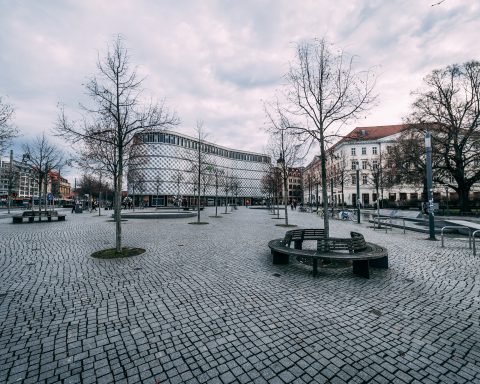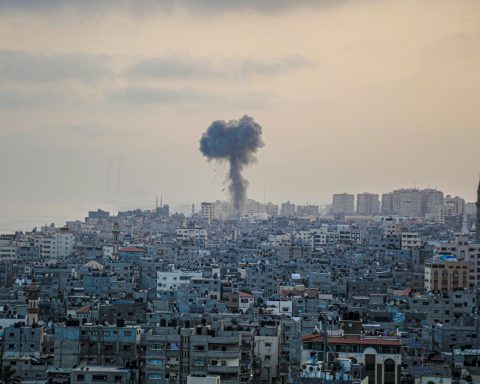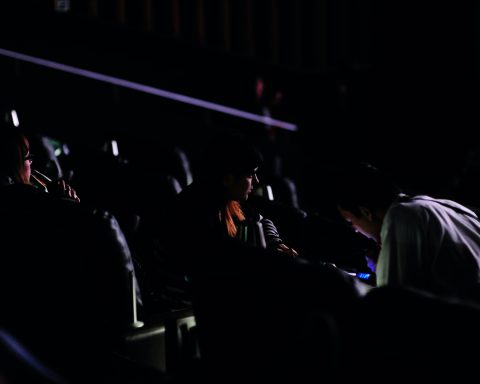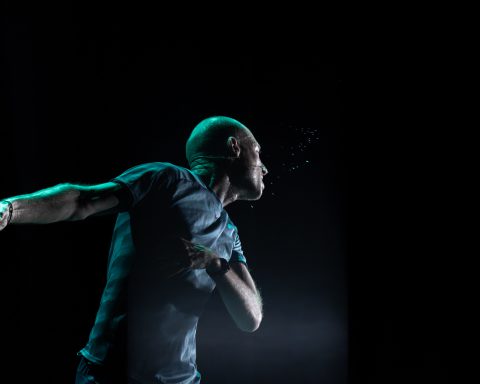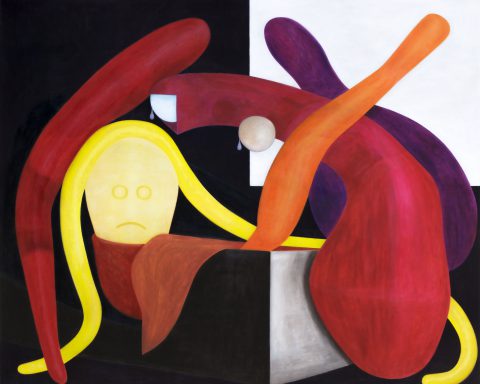We often hear or see the term “curator”, but do we actually know what one is? It dates back to the mid 14th century and means “to take care of” in Latin. But you’d be surprised what they were in charge of: lunatics and minors.
The next development came when the rich started collecting objects. These objects could literally be anything and, during the 17th century, people would have entire rooms dedicated to housing their collections. Naturally, among the items collected were works of art. In Germany, they called the rooms Kunstkammer or Wunderkammern. The people assigned to look after the collections were called “keepers”.
Throughout the 18th and 19th centuries, these collections grew and grew. Eventually many were bequeathed to the public. That’s how museums began. At that time a curator or team of curators took care of the collections and started to take on many new tasks.
Due to the evolution of art and how we experience it in the 20th century, curating has developed into an all encompassing role that goes far beyond selecting works and arranging them on the walls of the museum. We often see exhibitions at galleries, art spaces and off-spaces these days.
“The curator of contemporary art is now concerned with the whole physical and intellectual experience of an exhibition.” – Teresa Glaedow
Among other things, curators need to bridge the gap between art and the public through texts. Today marks the beginning of a new 7 part series written by participants in this year’s edition of the Konstfack CuratorLab based in Stockholm, Sweden. They recently went to the 11th Gwangju Biennale 2016, The Eighth Climate (What does art do?) in Korea. The texts originally appeared on their website.
intro by maeshelle west-davies
You buy a collection of frogs: Bernd Krauß
The different modes of transportation that we utilize while traveling to a foreign land, unequivocally dictate the level and type of experience and engagement we have with a place and culture. On the surface, the seemingly minuscule distinction between an air-conditioned taxi verse a bus that fills and empties every few blocks verse a crowded underground, may not seem like a major perspective shift to some. Yet these increments vary how embedded we temporarily become in a culture or how isolated we elect to remain.

The Eighth Climate (What does art do?), photo: Candace Goodrich
The speed which we take whether by foot or by bicycle, whether we use a paper map of the city center landmarks, the GPS on our phone, or if we simply rely on an intuitive sense of direction mixed with stopping locals for directions, all modifies our contact with the unfamiliar. We may seek out the peripheral and alternative or simply stick to the globalized corporate mainstream, the Unesco site assessment of world heritage, and the tourist board’s local, regional, and national image-making.
Each decision of how, what, and where determines our reading of a locale and positions us personally, even politically within that potential communication. These choices affect our impressions and sets us on the path, one of appreciation or judgement. Our own behavior within that context can also inversely be read.
The same can be said concerning our home environments. How do we perceive, explore, negotiate, reimagine, and reconfigure our surroundings, both foreign and familiar?
How much does how we travel reflect how we live?
I recently attended the 11th Gwangju Biennale in South Korea, “The 8th Climate: What Does Art Do”, where I encountered artist Bernd Krauß. I took advantage of this chance meeting to interview him about his process and newly commissioned work for the Biennale, entitled T.U.N..

The Eighth Climate (What does art do?), photo: Candace Goodrich
The two separate installations are presented in both the central Biennale space as well as the Mudeung Museum of Contemporary Art, at the foot of the Mudeung mountains. Each installation consists of a large variety of collected objects and materials found and sourced in Gwangju over the course of several weeks prior to the opening of the Biennale. The only elements not derived from the environment are the wooden sculptures whittled by Krauß. Additionally, the shelf element was set on wheels and itself wandered through the exhibition halls in the weeks after the opening. A wig-like segment travelled even further afield.
Krauß’s accumulation of objects is not an uncommon practice for installation-making.

The Eighth Climate (What does art do?), photo: Candace Goodrich
In one sense it could have been produced anywhere, and at the same time absolutely ONLY in Gwangju. My experience with T.U.N. was that I sporadically came across components of Krauß’s work as I myself explored Gwangju. Which led me to the belief that Krauß is a natural interpreter of things discarded, not seen, and forgotten, and by this he stimulates our perception of our environment.
Krauß, from my estimation, does not consciously collect as with research-based or theory-derived construction, and yet by contrast, he also does not operate strictly subconsciously as in an impulsive and intuitive selection. Krauß’s process is more of a movement, without a concrete beginning or end. The objects artists gravitate towards can be considered a montage that becomes in a sense a decollage of each artists’ psyche. We do experience a thought process when walking through Krauß’s work; however it is not linear, chronological, or obviously psychological. His approach is not conventionally methodological, nor would I say that he embodies the loose percepts of a flaneur in any intentional sense.
Perhaps if it were necessary to define Krauß’s activity leading to an artwork, it could be best described as a type of personal peregrination.
His wandering is the predominant tool in this work: Through his comings and goings, he becomes personally integrated, yet not bound. The transposition and actualization of the landscape is, in a sense, as Krauß puts it, the “driving engine” that calls Krauß to pick up parts of his environment. The subsequent change of location of these elements becomes a material part of the whole. Krauß is not metered in this activity, though he recognizes a starting point that creates the frame in order to bind artifacts together.
In the case of each installation at the Biennale, it was a climbing rope in one installation and a yellow plastic chain link in the other. These flexible lines, a type of repetitive mark-marking, allow for an organizational form to place things. It is also arguable that the wooden whittled figures are additional “stabilizing moments for your own dynamic”, as Krauß suggests. And yet Krauß admits that these constants could easily be replaced by another form. That their function is only to create “stations” or even obstacles for the “parkour”.

The Eighth Climate (What does art do?), photo: Candace Goodrich
Some installation artists exhaustively plan and orchestrate their works, while others base their selection process on automatic principles – such as have been historically exhibited in Surrealism and the Dada movement, which embraced All at rapid speeds, unfettered, without categorization or restriction.
Krauß is unique to this; as he is a harvester of his immediate environment, the cultivation takes place in the exhibition space.
The climbing rope, the yellow chain, the exhibition rooms themselves, those working within the environment, all become part of the guideline for growth. They are the vehicle that allow for accessibilities, creating didactic scenarios, improvisations.
Krauß states:
The exhibition is a tool of a practice. For you it’s the endpoint now, when you leave the space. If you look at documentation, you can follow that, but I think you don’t have to. I don’t think we are yet post-internet, but I think that it’s a really nice term, that we can actually look back at this former avant-garde, the process-oriented, in a much more pragmatic way.
I can change things and I don’t have to run around with the term of process, because I can just feed it into a kind of a live stream… it has a surface that can be looked at from the outside. I think that complicates things nicely… a lot of avant-garde things disappeared and a lot of things fell back into kind of old conservatisms, instead of actually keeping these things alive, but proving what they can do, then these avant-gardes are actually relevant, because they are applied then.
The loose reenactment of near-forgotten avant-garde practice can be found throughout Krauß’s work, though not intentionally. Perhaps his most important work, as it has informed his art since 1980 – and can be argued to be the core of his oeuvre – is his online newspaper Der Riercher, which makes a physical appearance in T.U.N. Der Riercher began as a collaborative periodical which later split into two solo projects, one Hamburg-based and the other Berlin-based. As Krauß describes, the publication fulfills the minimum requirements of “what a newspaper could be”. It is normally two A4 sheets folded in half, and consists of notations, gossip, rumors, stories, and found material. It’s essentially a constant exhibition space for Krauß. Der Riercher acts as that “live-stream”, allowing the flexibility of change without dismissive labels. Krauß states that “In Der Riercher everything is integrated”.
The other platform which is present in T.U.N., which has been 4 years in the making, is a more private space, though it is intermittently documented and publicly distributed. Krauß’s garden functions as another microcosm for experimentation, which informs his installations.
While looking at some photos, Krauß explains:
It allows you different things, and it brings things into focus you didn’t learn before. You buy a collection of frogs, first you build the pond, then a few weeks later you buy them, and then suddenly there are real frogs in the pond, these are things also to be watched. It becomes a world, and I think that is what I’m interested in to make exhibition or artistic practice, if possible as complex as reality.
The steps that Krauß takes in his conceptualizing has a consistency of curiosity which is a lens which he sees his environment through. After the interview with Krauß, we walked, missed the bus, walked some more. Contemplated cutting through someone’s garden, hopped on a random bus that was going in the direction that we wanted to go, and then when in the vicinity of our destination, we jumped off and hailed a cab. T.U.N. is how he understood Gwangju. It invites us to move through the city differently, to alter our path.
Candace Goodrich is an American artist/curator, currently based in Stockholm, Sweden. In 2001, she completed her BFA in painting at the School of Visual Arts – NY. In 2007, she earned her MFA also in painting from the New York Academy of Art. Candace went on to be a Senior painting assistant to Japanese artist Takashi Murakami (Kaikai Kiki, NY) in 2009/2010, while maintaining her own studio practice. She worked as an Advertising Director for MODERN PAINTERS (LOUISE BLOUIN MEDIA) in Berlin/NY in 2010/2011. She founded and directed her first curatorial project in 2012-2014, the international artist residency One-Sided Story involving 38 artists. She was the founding Art Director of the Kunstkraftwerk Leipzig, where she curated 16 international exhibitions, involving 100+ artists, representing 30+ countries, sponsored by numerous foundations, embassies, and ministries of culture worldwide. In addition to the exhibition program, she co-directed a complimentary education program and, together with Pogon-Zagreb, hosted ICSC-Intercity/Switchcity, a 3 year curatorial/collective residency exchange program. She is co-founder of the ArtSci Nexus, an interdisciplinary platform fostering collaborations between the arts and hard sciences. She is currently one of the eight international curators in the Curatorlab at the Konstfack in Stockholm.

